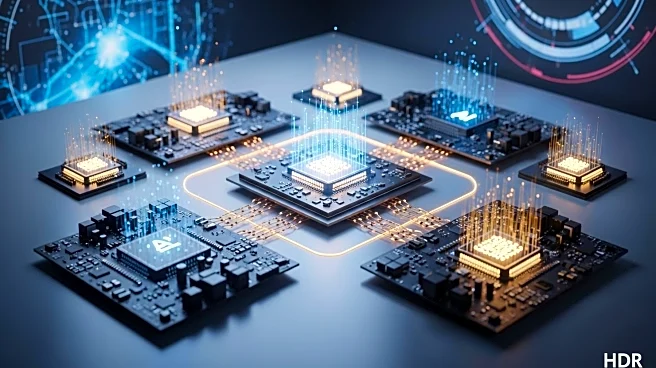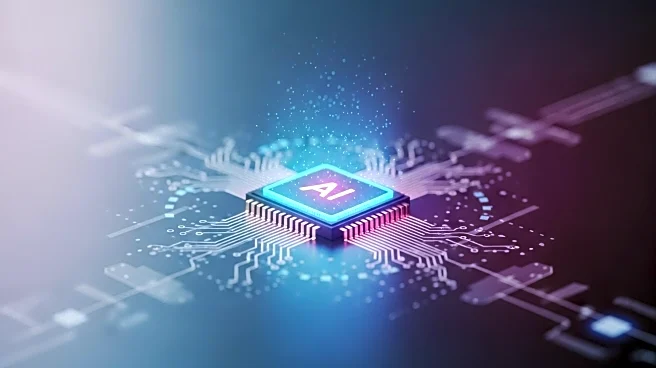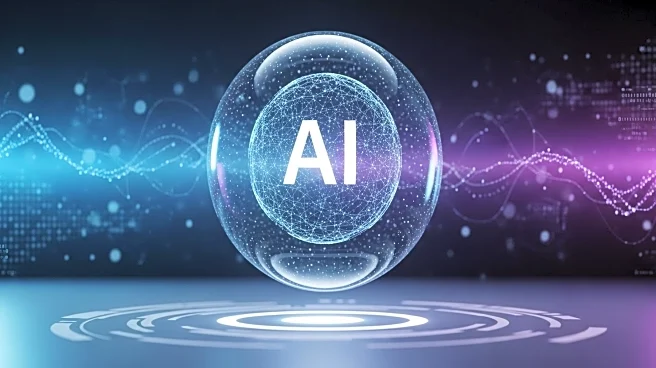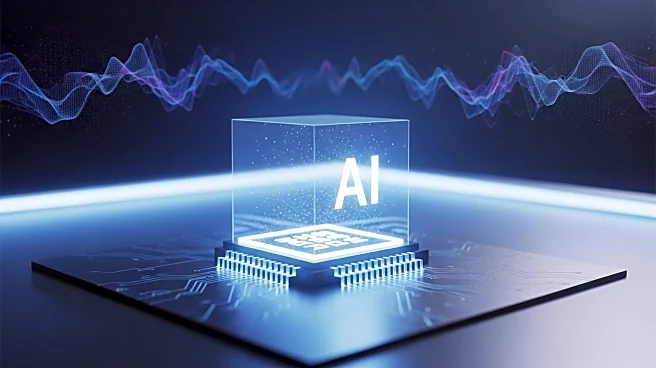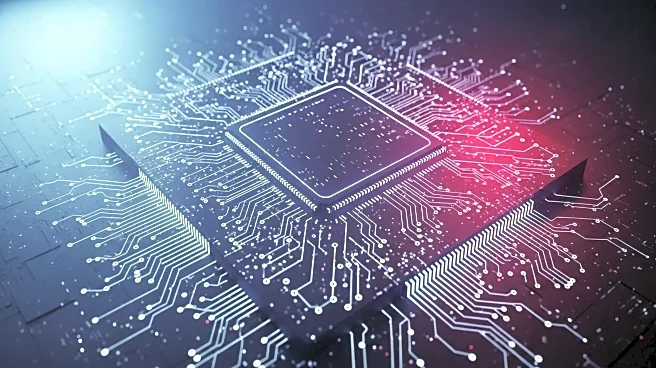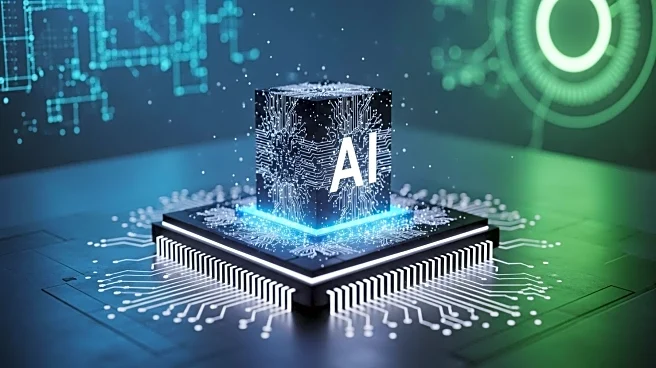What's Happening?
A school IB computer science class is examining the role of memory chips in the AI revolution. The class focuses on the differences between high bandwidth memory (HBM) and conventional dynamic random-access memory (DRAM), highlighting design, performance, and cost differences. The 'memory wall' problem, which limits system performance, is addressed by HBM's architectural design, aiding developers of large language models. The class also discusses leading companies in the memory chip sector and SK Hynix's innovations and strategies that have positioned it ahead in the HBM market.
Why It's Important?
Memory chips are becoming increasingly crucial in AI applications, as they can significantly impact performance. The exploration of HBM versus DRAM highlights the importance of memory capacity and bandwidth over pure computational power for AI inference tasks. Understanding these components is vital for students as they prepare for careers in technology and AI development. The class's focus on real-world technology scenarios provides practical insights into emerging technologies and industry dynamics.
What's Next?
Students will continue to explore the integration of processors into memory stacks, which could alter traditional CPU-memory relationships. This exploration will help students understand the evolving landscape of computer hardware and its implications for AI. The class will evaluate arguments regarding memory performance's critical role in AI tasks, using evidence from industry comparisons.

